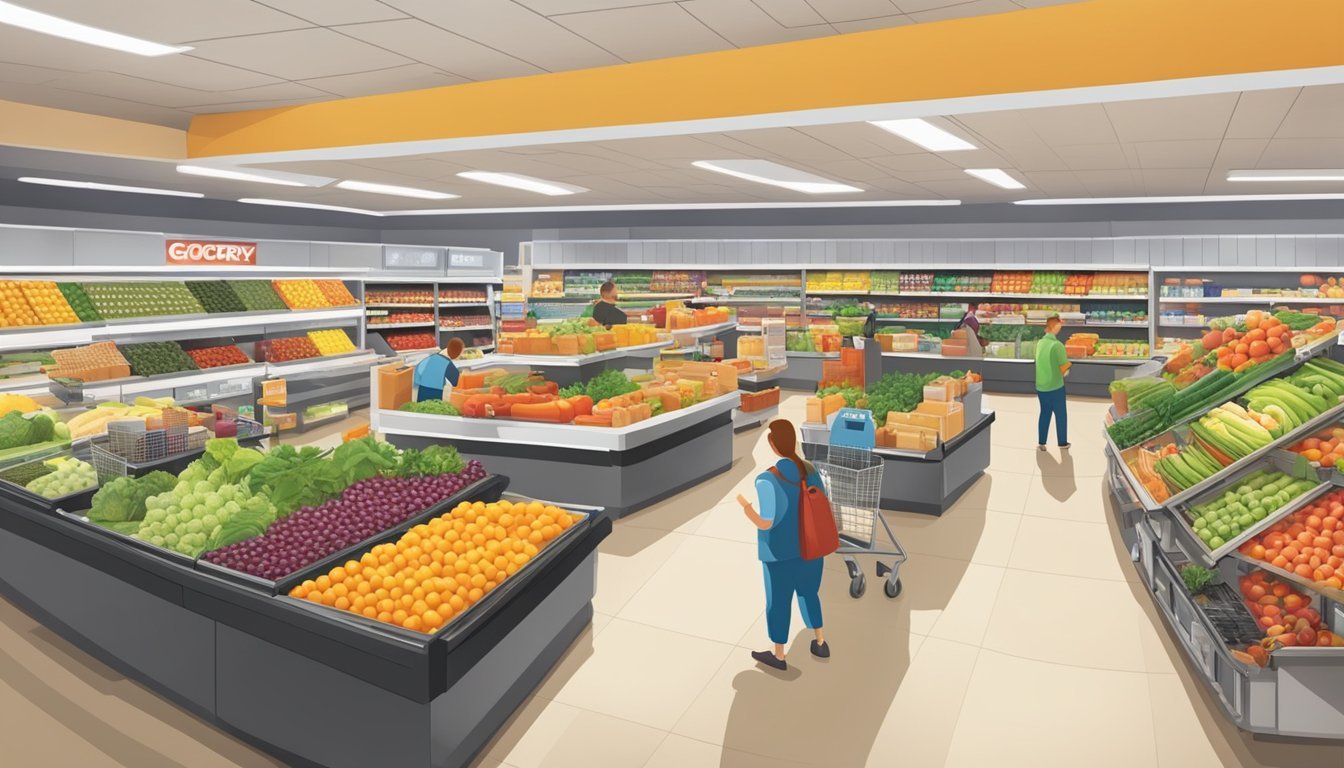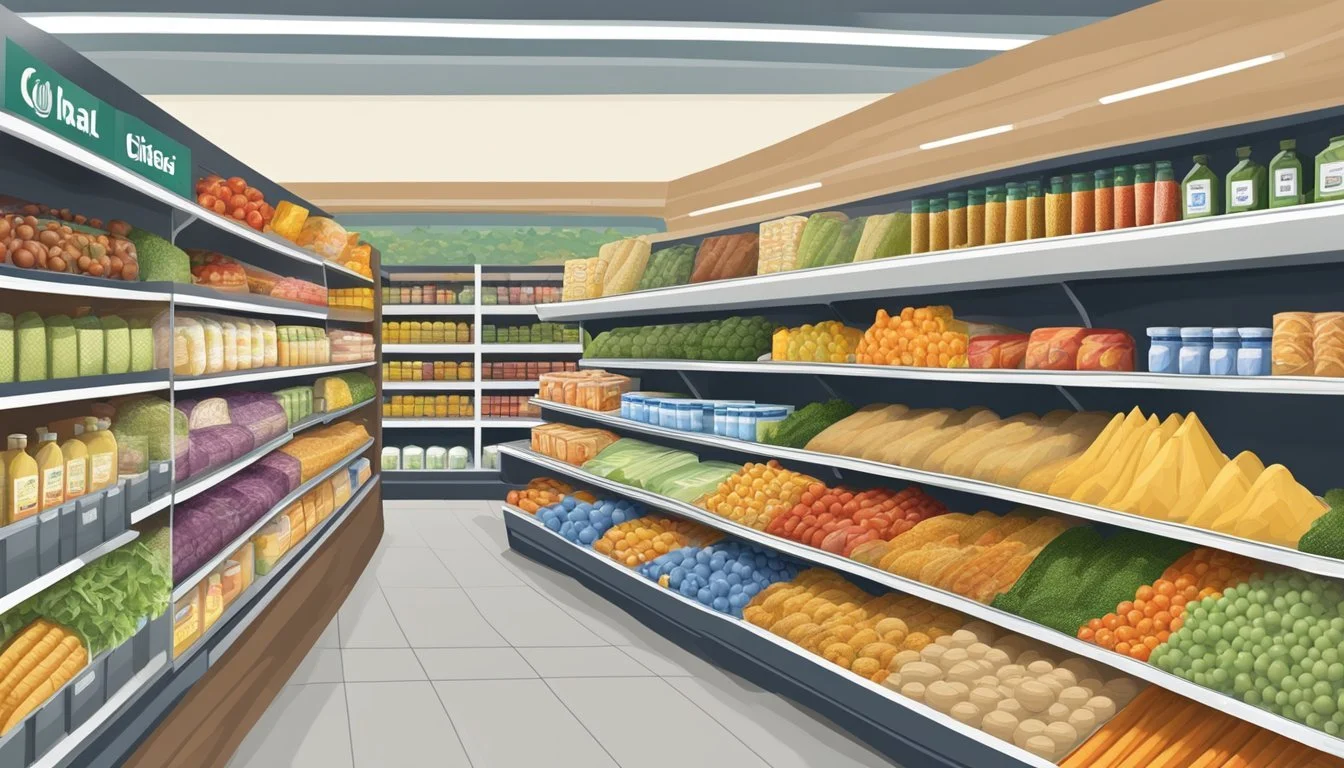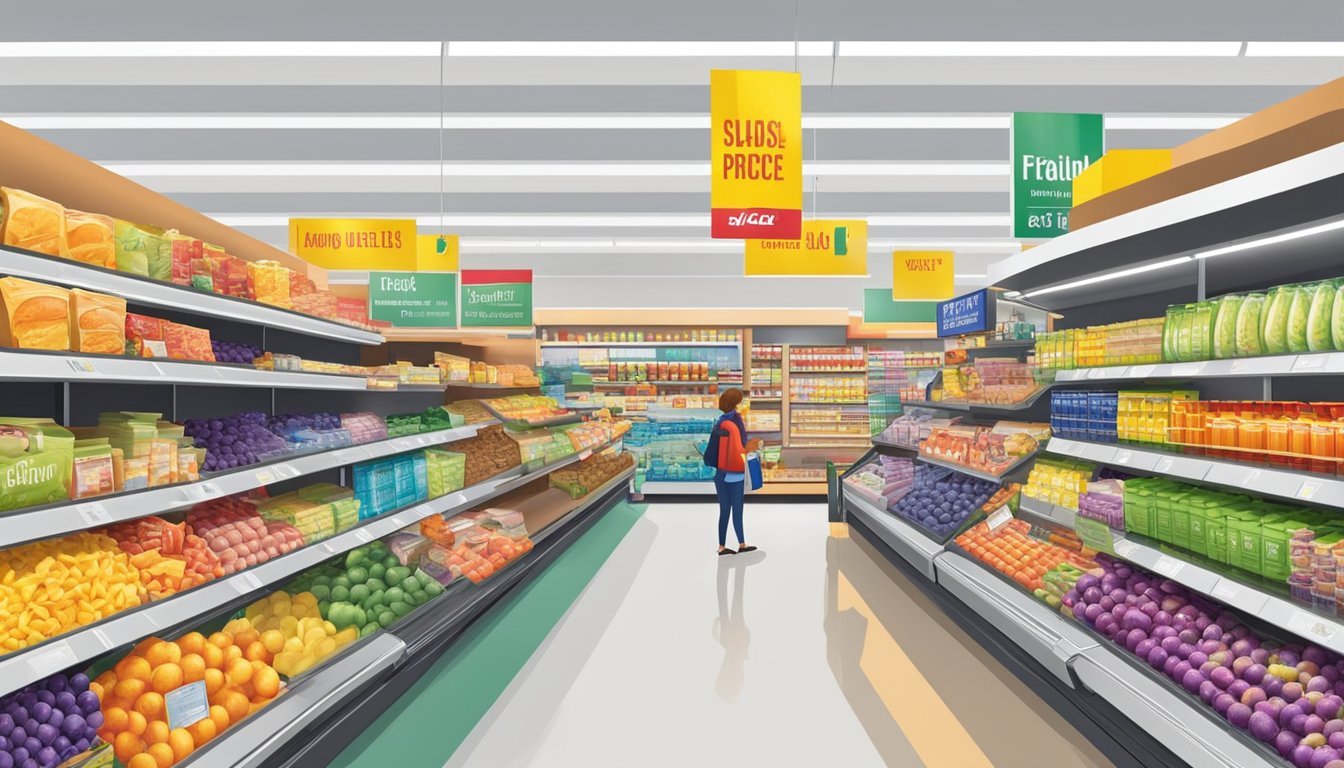Giant Food vs Lidl
A Comprehensive Comparison of Price, Quality, and Selection
Giant Food and Lidl represent two distinct approaches to grocery shopping. Giant Food, a well-established American chain, offers a comprehensive range of products in spacious stores. Lidl, a German discount retailer, focuses on efficiency and cost-effectiveness with a more limited selection.
While Giant Food provides a familiar, full-service shopping experience, Lidl often delivers lower prices on many items. Both stores strive to meet customer needs, but their strategies differ significantly. Giant Food emphasizes variety and traditional amenities, while Lidl prioritizes streamlined operations and budget-friendly options.
Choosing between these two grocery stores depends on individual preferences and priorities. Shoppers seeking a wide selection of brands and specialty items may prefer Giant Food. Those focused primarily on saving money and don't mind a more limited assortment might find Lidl more appealing.
Overview of Giant Food and Lidl
Giant Food and Lidl represent two distinct approaches to grocery retail in the United States. Both chains have established significant presences on the East Coast, offering customers a range of products and shopping experiences.
History and Expansion
Giant Food traces its roots back to 1936 when it was founded in Washington, D.C. The company gradually expanded throughout the Mid-Atlantic region, becoming a household name in states like Maryland, Virginia, and Delaware. Giant Food's growth strategy focused on building large supermarkets in suburban areas.
Lidl, on the other hand, is a relative newcomer to the U.S. market. Founded in Germany in 1973, Lidl began its U.S. expansion in 2017. The company adopted an aggressive growth plan, opening numerous stores along the East Coast in a short period. Lidl's expansion strategy centered on introducing its European-style discount model to American consumers.
Current Market Presence
Giant Food operates over 160 supermarkets across the East Coast. These stores typically feature wide aisles, extensive product selections, and full-service departments. Giant's market presence is particularly strong in the Washington-Baltimore metropolitan area.
Lidl has rapidly established a footprint of more than 170 stores in nine East Coast states. The company's stores are generally smaller than traditional supermarkets, focusing on efficiency and low prices. Lidl's no-frills approach includes a limited selection of private-label products and a rotating assortment of non-food items.
Both chains continue to adapt to changing consumer preferences. Giant Food has invested in online ordering and delivery services, while Lidl has adjusted its store formats to better suit American shopping habits.
Comparing Shopping Experience
Giant Food and Lidl offer distinct shopping experiences that cater to different customer preferences. Their approaches to store layout, product selection, and customer service set them apart.
Store Layout and Navigation
Giant Food stores typically feature a spacious layout with wide aisles and clear signage. Customers can easily navigate through different departments, including produce, bakery, deli, and household goods. The stores often have a logical flow, guiding shoppers from fresh items to packaged goods.
Lidl stores, in contrast, have a more compact design. They utilize a no-frills approach with products often displayed in their shipping boxes. This layout can make shopping quicker but may require more effort to locate specific items. Lidl's layout emphasizes efficiency, with a central aisle featuring rotating weekly specials.
Both stores organize their products differently. Giant Food follows a traditional supermarket model, while Lidl adopts a discount store format with a streamlined selection.
Customer Service
Giant Food prioritizes customer service, offering full-service departments like deli counters and bakeries. Employees are readily available to assist shoppers with questions or product locations. The stores often provide additional services such as pharmacy and banking facilities.
Lidl takes a more self-service approach. While staff are present to restock and manage checkout, the emphasis is on efficiency rather than personalized assistance. This model allows Lidl to maintain lower prices but may not suit customers who prefer more hands-on support.
Both stores aim to create positive shopping experiences, but they target different customer priorities. Giant Food focuses on comprehensive service, while Lidl emphasizes speed and value.
Product Selection and Brands
Giant Food and Lidl offer distinct product selections, balancing name brands and private labels. Their approaches to variety, specialty items, and organic options differ significantly.
Variety of Options
Giant Food provides a wide array of products, stocking around 50,000 items in larger stores. Customers can find extensive choices in produce, meats, dairy, and packaged goods. The selection includes both national brands and Giant's own private labels.
Lidl takes a more curated approach, offering about 3,500 products. This streamlined selection focuses on essentials and high-turnover items. Lidl's stores feature a rotating selection of limited-time specialty products, which can include anything from kitchen gadgets to clothing.
Name Brand vs Store Brand
Giant Food carries numerous national brands alongside its private labels. Customers can choose from familiar names in most categories. Giant's store brands, including Nature's Promise and Taste of Inspirations, offer alternatives at lower price points.
Lidl emphasizes its own brands, which make up about 90% of its inventory. These private labels often match or exceed the quality of national brands at lower prices. Lidl does stock some name brands, particularly in categories where customers have strong brand preferences.
Organic and Specialty Items
Giant Food offers a substantial organic selection through its Nature's Promise line and other brands. The stores typically have dedicated organic produce sections and carry organic options in most departments.
Lidl provides a more limited but growing organic range. Its organic offerings focus on staple items and produce. Lidl's specialty items often appear as weekly promotions, featuring international foods or seasonal products. These rotating specials add variety to Lidl's otherwise consistent inventory.
Comparing Product Quality
Giant Food and Lidl offer distinct product quality profiles across their grocery selections. Both stores aim to meet customer expectations, but differences emerge in freshness, variety, and overall quality standards.
Fresh Produce
Giant Food maintains a wide selection of fresh fruits and vegetables, sourcing from both local farms and national suppliers. Their produce section often features organic options alongside conventional choices. Lidl, while offering a more limited range, emphasizes affordability without compromising on freshness.
Lidl's produce typically includes in-season fruits and vegetables at competitive prices. Giant Food's produce tends to have a longer shelf life due to their larger turnover and storage facilities. Both stores implement quality control measures, but Giant Food generally provides more consistent produce quality across its locations.
Bakery and Dairy
Giant Food boasts an extensive in-store bakery, producing fresh bread, pastries, and cakes daily. Their dairy section includes a mix of name-brand and private-label products. Lidl's bakery, though smaller, offers freshly baked goods throughout the day at lower price points.
Lidl's dairy selection focuses primarily on their own brand, with limited national brands available. Giant Food provides a broader range of dairy options, including specialty and organic items. Both stores maintain high standards for dairy freshness, but Giant Food typically offers more variety in this department.
Meat and Seafood
Giant Food's meat department features a butcher counter with custom cuts and a variety of pre-packaged options. Their seafood selection includes both fresh and frozen choices, often sourced sustainably. Lidl's meat and seafood offerings are more limited but still maintain quality standards.
Lidl focuses on pre-packaged meats and a rotating selection of seafood specials. Giant Food generally provides a wider range of cuts and types of meat, as well as a more consistent seafood inventory. Both stores prioritize food safety in their meat and seafood handling practices, but Giant Food typically offers more premium options in this category.
Price Analysis
Giant Food and Lidl employ distinct pricing strategies to attract customers. Their approaches to everyday pricing, sales, and discounts shape the overall shopping experience for consumers.
Everyday Pricing
Giant Food offers competitive prices on a wide range of products. Their regular prices tend to be slightly higher than discount chains but lower than premium grocery stores. Giant's private label products provide budget-friendly options across various categories.
Lidl focuses on offering consistently low prices as a core part of their business model. Their everyday prices are often significantly lower than traditional supermarkets. Lidl achieves this through a no-frills store layout, limited product selection, and efficient operations.
Both stores price staple items like milk, bread, and eggs competitively to draw customers in. However, Lidl generally maintains lower everyday prices on most items compared to Giant Food.
Sales and Discounts
Giant Food runs weekly sales and promotions advertised in circulars and their mobile app. They offer digital coupons, gas rewards programs, and loyalty card discounts to provide additional savings. Giant frequently features buy-one-get-one deals on popular items.
Lidl takes a different approach to discounts. They offer fewer traditional sales but maintain consistently low prices. Lidl features weekly "Fresh 5" produce deals and rotating non-food specials to create excitement and drive traffic.
Giant's promotions can lead to significant savings for savvy shoppers who plan their purchases around sales. Lidl's everyday low prices may appeal more to customers who prefer simpler, predictable pricing.
Price Comparison
A basket of common grocery items typically costs less at Lidl compared to Giant Food. Studies show Lidl's prices can be 15-20% lower on average for identical products. However, Giant offers a broader selection, potentially negating some savings for shoppers needing specific brands.
Produce prices at Lidl are often substantially lower, sometimes up to 50% less than Giant. Meat prices vary, with Lidl generally cheaper on chicken and pork, while Giant may offer better deals on beef through sales.
Giant's prices become more competitive when factoring in loyalty discounts and promotions. For budget-conscious shoppers willing to comparison shop, mixing trips between the two stores can maximize savings on different product categories.
Budget-Friendly Options for Families
Giant Food and Lidl both offer budget-friendly options for families looking to save on groceries. Lidl stands out with consistently low prices across product categories, making it an attractive choice for cost-conscious shoppers.
Giant Food's loyalty program and promotions can lead to significant savings over time. Families can take advantage of weekly deals and earn points for future discounts.
Lidl's efficiency-focused model allows them to keep prices down. They offer a streamlined selection of brands and design stores for quick shopping trips, passing these savings on to customers.
Both stores provide value-oriented store brand options. These products often match the quality of name brands at lower price points, helping families stretch their budgets further.
For produce, Lidl's self-service approach keeps costs down. Giant Food may offer more variety, but budget-conscious families can find competitive prices on fresh fruits and vegetables at both stores.
Comparison shopping between the two can yield the best savings. Families may find certain items are consistently cheaper at one store over the other, allowing for strategic shopping trips.
By combining loyalty programs, store brand purchases, and weekly promotions, families can maximize their savings at both Giant Food and Lidl. The best choice may depend on specific family needs and local store offerings.
Store Locations and Convenience
Giant Food and Lidl offer different approaches to store locations and accessibility. Their distribution strategies and community presence shape the shopping experience for customers across various regions.
Accessibility and Distribution
Giant Food operates primarily in the Mid-Atlantic region of the United States. The chain has a strong presence in Maryland, Virginia, Delaware, and Washington D.C. Giant Food stores are often found in suburban areas and town centers, making them accessible to many residents.
Lidl, on the other hand, has focused its expansion on the East Coast since entering the U.S. market in 2017. The German-based discount grocer has steadily increased its footprint, with stores in states like New Jersey, Pennsylvania, and the Carolinas. Lidl typically chooses locations in areas with high traffic and visibility.
Community Presence
Giant Food has established deep roots in its operating areas over decades. The company often participates in local events and supports community initiatives. Many shoppers view Giant Food as a familiar neighborhood grocery store.
Lidl, as a relative newcomer, is still building its community presence. The chain aims to attract customers with its low prices and efficient store layouts. Lidl stores are generally smaller than traditional supermarkets, which can make them more convenient for quick shopping trips.
Both retailers strive to balance convenience and accessibility. Giant Food leverages its long-standing relationships with communities, while Lidl focuses on strategic locations and a streamlined shopping experience to appeal to cost-conscious consumers.
Customer Loyalty and Retention
Giant Food and Lidl employ various strategies to foster customer loyalty and encourage repeat business. These efforts aim to create a positive shopping experience and build lasting relationships with customers.
Rewards Programs
Giant Food offers the Giant Card program, providing customers with exclusive savings and personalized deals. Members earn points on purchases, which can be redeemed for discounts on groceries or gas. The program also features digital coupons and special promotions.
Lidl takes a different approach, focusing on everyday low prices rather than a traditional loyalty program. They offer a mobile app with weekly specials and digital coupons. This strategy aims to attract price-conscious shoppers who prefer straightforward savings without the need to track points or rewards.
Both stores' approaches have their merits, appealing to different customer preferences.
Customer Feedback and Ratings
Giant Food actively solicits customer feedback through in-store surveys and online platforms. They use this information to improve store operations, product selection, and customer service. The company often responds to customer reviews and addresses concerns promptly.
Lidl also values customer input, encouraging shoppers to share their experiences. They conduct regular satisfaction surveys and monitor online ratings. Lidl's commitment to quality and affordability is reflected in generally positive customer feedback.
Both retailers use customer insights to refine their offerings and enhance the shopping experience. This responsiveness helps build trust and loyalty among their customer base.
Environmental and Social Responsibility
Giant Food and Lidl both demonstrate commitments to environmental and social responsibility. Lidl has released a Corporate Social Responsibility report outlining concrete goals and achievements.
Lidl aims to reduce greenhouse gas emissions and narrow their gender pay gap. The company is also working on transportation efficiencies, operational energy improvements, and food waste reduction.
Giant Food offers a wide selection of organic produce, catering to environmentally conscious consumers. Both retailers have implemented sustainability initiatives in their operations.
Lidl has made strides in protecting environmental biodiversity. The company has also supported communities through significant food donations to organizations like Feeding America.
Giant Food maintains a strong reputation for community involvement. The retailer often partners with local organizations and sponsors community events.
Both stores have taken steps to reduce plastic waste and promote reusable bags. They also offer recycling programs for customers to return certain packaging materials.
Lidl and Giant Food prioritize sourcing products from sustainable suppliers. This commitment extends to their seafood, meat, and produce departments.








